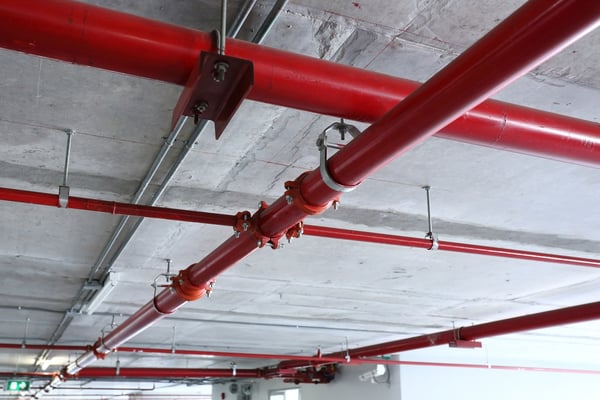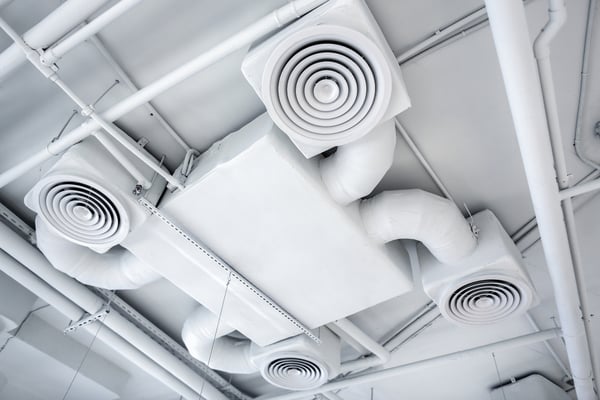Due to government lockdowns in response to the COVID-19 pandemic, many buildings remained empty or nearly empty for several months. There should be no problems if a building has received regular inspections and maintenance, but otherwise there could be hazards that threaten occupants upon reopening. In particular, building owners must ensure that fire protection systems function properly and that water systems are free of Legionella.
When building systems malfunction, they often cause disruption and disruption. However, some systems have zero margin for error and the consequences of a malfunction can be serious. For example, fire protection systems must alert occupants and extinguish the fire as quickly as possible.
Make sure your building is safe before reopening.
Performance issues are more likely in a building that has remained closed and not optimally maintained. Some examples of minor problems are mechanical binding and rust, which cause unplanned expenses and outages. However, building owners must make sure there are no hazards that threaten occupants.
Are your fire protection systems working properly?

A quick response is essential in all fire protection systems. A fire alarm activated too late takes valuable seconds away from occupants trying to evacuate, and an unresponsive sprinkler system can allow flames to spread beyond control. Even smoke is dangerous, especially when accumulated, as it has a suffocating effect.
Fire protection systems are made up of many electrical and mechanical components and must be maintained in good working order to ensure reliable operation. Before reopening a building, the owner must have a professional inspection of the fire protection systems.
A fire protection problem can have serious consequences as it remains undetected until there is an emergency. If a building has remained closed for months with little maintenance, there is a greater chance that a fire protection element has deteriorated. Waiting for a fire to occur to discover there is a breakdown is unacceptable; building owners must check their premises before reopening.
Are your water systems free of Legionella?

Legionella bacteria cause a type of pneumonia called Legionnaires' disease, which has a mortality rate of around 10%. For comparison purposes, some experts believe that the COVID-19 mortality rate is less than 1%, if we consider cases with mild symptoms and asymptomatic cases. Legionnaires' disease is acquired by inhaling droplets of the bacteria, but, fortunately, there have been no reports of human-to-human transmission.
Legionella tends to grow in stagnant water, especially if it is warm. Any building system with water can be affected, including cooling towers and hydronic pipes. The best recommendation is to keep the water circulating and heat it to a temperature of at least 140°F. Ultraviolet germicidal irradiation (UVGI) can also kill Legionella.
In early August, the Centers for Disease Control and Prevention had to close several offices in Atlanta after detecting Legionella. Thanks to the quick action, no employees were exposed to the bacteria. Due to the high mortality rate from Legionnaires' disease, building owners cannot afford to expose their occupants to the bacteria.
Ensuring adequate ventilation when reopening buildings

A ventilation malfunction causes discomfort and has a negative effect on indoor air quality if the problem is not resolved quickly. However, during the COVID-19 pandemic and its consequences, ventilation will play an even more important role in buildings. When ventilation is not sufficient, higher concentrations of viral particles can accumulate in the air, increasing the risk of infection.
ASHRAE recommends increasing outdoor air supply up to 100% and no indoor air recirculation if possible. They also recommend upgrading all air filters to at least a MERV 13 rating. Therefore, according to the new recommendations, a proper ventilation system may have been lacking before the coronavirus outbreak.
A professional evaluation of the ventilation system is highly recommended before reopening a building. There is evidence that the new coronavirus can remain in the air for hours, exposing occupants even after an infected person has left the building. The ventilation system must not allow the accumulation of viral particles while using a filter fine enough to capture them. UGVI is also recommended because it can inactivate viruses by destroying their DNA.
Conclusion
When a building reopens after an extended period, three main threats must be excluded: malfunction of fire protection systems, presence of Legionella in water systems and lack of ventilation. All building systems must be inspected before reopening to ensure performance, but these three aspects are critical to health and safety.
A professional MEP engineering company can inspect your facility and detect any potential problems, including those that create safety risks when reopening a building. COVID-19 is not the only threat – Legionella bacteria are even more dangerous and fire protection components may not respond properly.

